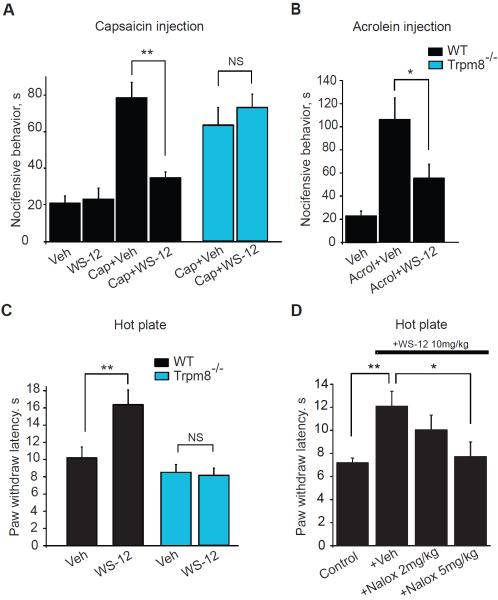Fig. 5.
Effects of WS-12 on acute thermal-, capsaicin- and acrolein-induced nocifensive behavior.
(A) Nocifensive behavior of wild-type (black) or Trpm8−/− (blue) mice following local injection of vehicle (corn oil), WS-12 (6 nmol), capsaicin (2 nmol), and capsaicin (2 nmol) in combination with WS-12 (6 nmol), all administered in 20 μl injection volume. **p < 0.01, NS: not significant (p > 0.05). n=6–12 mice per group.
(B) Nocifensive behavior in response to paw injections of vehicle (corn oil), acrolein (30 nmol/20 μl), and acrolein and WS-12 (6 nmol/20 μl) together, 20 μl injection volume each recorded as in (A). n=6–7 mice per group. *p < 0.05.
(C) Paw withdrawal latencies in the hot plate test (52°C) in wild-type (black) or Trpm8−/− mice, injected i.p. with vehicle (corn oil) or WS-12 (10 mg/kg) in a volume of 5 ml/kg, 30 min prior to testing. n =6–8 mice per group.
(D) Effects of naloxone on WS-12 induced analgesia in the hot plate test (52°C). WS-12 (10 mg/kg) was administered as in (C) 30 min before testing. 15 min later, naloxone (Nalox, 2 or 5 mg/kg, i.p.) or vehicle (Veh, PBS) in a volume of 5 ml/kg was injected. n=8–12 mice per group.

